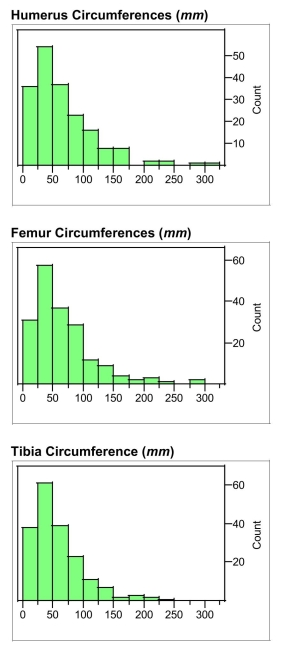The average circumferences (distances around) in mm of the humerus, femur, and tibia
of different species of mammals are displayed below. These long bones primarily
support the body mass in mammals. Each data value is the mean circumference for
the available measures for a single species. (a)Describe the differences and similarities in the distributions of these different bones.
(b) Biologists speculate that greater weights might be supported by larger bones. Based on the histograms, if the biologists' speculations are correct, which of these bones (humerus, femur, or tibia) would seem to be the least able to support a large weight? Explain, referring to specific aspects of the histograms.
Correct Answer:
Verified
View Answer
Unlock this answer now
Get Access to more Verified Answers free of charge
Q23: D Desert organisms must cope with
Q24: During the first six months of the
Q25: Investigators were interested in communication about sex
Q26: As part of the United States
Q27: Desert organisms must cope with extreme
Q28: It is well known that the
Q29: The Des Moines Register article in
Q30: A study by the National Bureau
Q31: A report in the Des Moines
Q32: It is well known that the
Unlock this Answer For Free Now!
View this answer and more for free by performing one of the following actions

Scan the QR code to install the App and get 2 free unlocks

Unlock quizzes for free by uploading documents